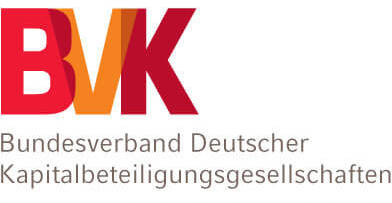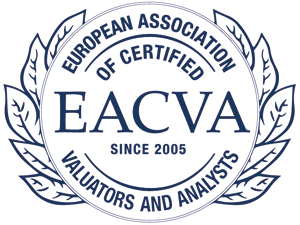RESEARCH PAPERS | RISK MANAGEMENT
Inflation Derivatives
HOW LIKELY IS AN INFLATION DISASTER?
Jens Hilscher, Alon Raviv, and Ricardo Reis
2025
Long-dated inflation swap contracts provide widely-used estimates of expected inflation. We develop methods to estimate complementary tail probabilities for persistently very high or low inflation using inflation options prices. We show that three new adjustments to conventional methods are crucial: inflation, horizon, and risk. An application of these methods finds: (i) US deflation risk in 2011-14 has been over-stated, (ii) ECB unconventional policies lowered the deflation disaster probability, (iii) inflation expectations deanchored in 2021-22, (iv) and reanchored as policy tightened, (v) but the 2021-24 disaster left scars, (vi) US expectations are less sensitive to inflation realizations than in the EZ. >more
Cyberattacks
THE PROPAGATION OF CYBERATTACKS THROUGH THE FINANCIAL SYSTEM: EVIDENCE FROM AN ACTUAL EVENT
Antonis Kotidis, and Stacey Schreft
2025
This article quantifies the effects of a multiday cyberattack that forced offline a technology service provider (TSP) to the banking sector. The attack impaired customers' ability to send payments through the TSP, but the business continuity plans of banks and the TSP reduced the effect by more than half. Large banks performed better. Through contagion, banks not directly exposed to the attack experienced a liquidity shortfall, causing them to borrow funds or tap reserves. The ability to send payments after hours helped avoid further contagion. These results highlight the importance of preparedness by the private and official sector for cyberattacks. >more
Nature Risk
DIVERSIFICATION DRIVEN DEMAND FOR LARGE STOCK
Huaizhi Chen
2025
I show that as a portfolio’s value concentration increases, actively managed portfolios predictably trim large positions, maintaining a level of practical diversification. This rebalancing channel is concentrated at thresholds implied by regulatory guidelines and by a fund’s own risk management histories. Since larger stocks are typically held widely and in large weights, they experience a coordinated contrarian trading demand that originates from this form of risk management. Diversification driven demand captures a novel return-reversal pattern in the large stock portfolios. Compensating this source of demand accentuates momentum returns during the modern sample period (1990 to 2022). >more
Hedging
TARIFF WAR SHOCK AND THE CONVENIENCE YIELD OF US TREASURIES -A HEDGING PERSPECTIVE
Viral V. Acharya, and Toomas Laarits
2025
This note explains how the "tariff war" shock of early April 2025 affected the convenience yield of US Treasuries. Its erosion at the long end is consistent with a reduction in the safe-asset hedging property of long bonds, reflected in a rising stock-bond covariance computed using intraday data. Decomposing the Treasury yield into the risk-free rate, credit spread, and the convenience yield components reveals that it is covariance due to the convenience yield component that rose for long bonds. The same decomposition reveals that the short end of the Treasury curve continued to exhibit the safe-asset hedging property both due to a lowering of the (expected) risk-free rates as well as an increase in the convenience yield component. These effects are consistent with stagflation risk, withdrawal of safe-asset investors, rotation towards shorter-term Treasuries and gold, and unwinding of cash-futures basis trades. >more
Nature Risk
CORPORATE NATURE RISK PERCEPTIONS
Snorre Gjerde, Zacharias Sautner, Alexander F. Wagner, and Alexis Wegerich
2025
We survey companies worldwide on their nature risk perceptions, actions, and investor interactions to provide an early view of an emerging risk. Nearly half view nature risks as financially material. Nature restoration efforts are less widespread than mitigation efforts. Among respondents who experienced investor engagement on nature, three-quarters see it as value-generating, often prompting strategic changes. Many findings have implications for researchers, investors, and policymakers. First, 28% (44%) of companies believe that naturerelated transition (physical) risks already have financial effects, indicating growing urgency. Second, financial effects originate from various stakeholders and sources, making it difficult to capture risks with a few standardized metrics. Third, while 40% state that investors consider nature risks when investing, only about 20% think investors expect nature-related cashflow or cost of capital effects. Fourth, 50% believe that investors prioritize climate over nature; however, half of them think both topics should be valued equally. >more
FX Hedging
THE BEST STRATEGIES FOR FX HEDGING
Pedro Castro, Carl Hamill, John Harber, Campbell R. Harvey, and Otto Van Hemert
2025
The question of whether, when, and how to hedge foreign exchange risk has been a vexing one for investors since the end of the Bretton Woods system in 1973. Our study provides a comprehensive empirical analysis of dynamic FX hedging strategies over several decades, examining various domestic and foreign currency pairs. While traditional approaches often focus on risk mitigation, we explore the broader implications for expected returns, highlighting the interplay between hedging and strategies such as the carry trade. Our findings reveal that incorporating additional factors-such as trend (12-month FX return), value (deviation from purchasing power parity), and carry (interest rate differential) - into hedging decisions delivers significant portfolio benefits. By adopting a dynamic, active approach to FX hedging, investors can enhance returns and manage risk more effectively than with static hedged or unhedged strategies. >more
Biodiversity Risk
BIODIVERSITY RISK
Stefano Giglio, Theresa Kuchler, Johannes Stroebel, and Xuran Zeng
2023
We explore the effects of physical and regulatory risks related to biodiversity loss on economic activity and asset values. We first develop a news-based measure of aggregate biodiversity risk and analyze how it varies over time. We also construct and publicly release several firm-level measures of exposure to biodiversity risk, based on textual analyses of firms' 10-K statements, the holdings of biodiversity-related funds, and a large survey of finance professionals, regulators, and academics. Exposures to biodiversity risk vary substantially across industries in a way that is economically sensible and distinct from exposures to climate risk. We find evidence that biodiversity risks already affect equity prices: returns of portfolios that are sorted on our measures of biodiversity risk exposure covary positively with innovations in aggregate biodiversity risk. However, our survey indicates that market participants do not perceive the current pricing of biodiversity risks in equity markets to be adequate. We also construct several measures of biodiversity risk exposure across U.S. counties, but find little evidence that those exposures are priced in municipal bond markets. >more
Resilience
RISK, THE LIMITS OF FINANCIAL RISK MANAGEMENT, AND CORPORATE RESILIENCE
René M. Stulz
2024
Existing evidence shows convincingly that expected cash flows of non-financial firms can be negatively affected by their total risk, so that non-financial firms can create shareholder wealth by managing their total risk. After reviewing theories that demonstrate links between firm value and total risk, I examine how financial risk management is used to manage firm total risk. I conclude from the evidence that the use of financial risk management is mostly limited to near-term risk in non-financial firms. I offer explanations for this limited role of financial risk management. I argue that the limitations of financial risk management make it important for firms to also focus on resilience and call for more research on the costs and benefits of resilience. >more
Firm-Level Risk Exposure
FROM TRANSCRIPTS TO INSIGHTS: UNCOVERING CORPORATE RISKS USING GENERATIVE AI
Alex Kim, Maximilian Muhn, and Valeri V. Nikolaev
2024
We explore the value of generative AI tools, such as ChatGPT, in helping investors uncover dimensions of corporate risk. We develop and validate firm-level measures of risk exposure to political, climate, and AI-related risks. Using the GPT 3.5 model to generate risk summaries and assessments from the context provided by earnings call transcripts, we show that GPT-based measures possess significant information content and outperform the existing risk measures in predicting (abnormal) firm-level volatility and firms’ choices such as investment and innovation. Importantly, information in risk assessments dominates that in risk summaries, establishing the value of general AI knowledge. We also find that generative AI is effective at detecting emerging risks, such as AI risk, which has soared in recent quarters. Our measures perform well both within and outside the GPT’s training window and are priced in equity markets. Taken together, an AI-based approach to risk measurement provides useful insights to users of corporate disclosures at a low cost. >more
Climate Risk
CORPORATE CLIMATE RISK: MEASUREMENTS AND RESPONSES
Qing Li, Hongyu Shan, Yuehua Tang, and Vincent Yao
2023
This paper conducts a textual analysis of earnings call transcripts to quantify climate risk exposure at the firm level. We construct dictionaries that measure physical and transition climate risks separately and identify firms that proactively respond to climate risks. Our validation analysis shows that our measures capture firm-level variations in respective climate risk exposure. Firms facing high transition risk, especially those that do not proactively respond, have been valued at a discount in recent years as aggregate investor attention to climate-related issues has been increasing. We document differences in how firms respond through investment, green innovation, and employment when facing high climate risk exposure. >more
Supply Constraints
ASSESSING THE IMPACT OF SUPPLY DISRUPTIONS ON THE GLOBAL PANDEMIC RECOVERY
Harri Kemp, Rafael Portillo, and Marika Santoro
2023
We estimate the role of (pre-Ukraine war) supply disruptions in constraining the Covid-19 pandemic recovery, for several advanced economies and emerging markets, and globally. We rely on two approaches. In the first approach, we use sign-restricted Vector Auto Regressions (SVAR) to identify supply and demand shocks in manufacturing, based on the co-movement of surveys on new orders and suppliers’ delivery times. The effects of these shocks on industrial production and GDP are recovered through a combination of local projection methods and the input-output framework in Acemoglu et al. (2016). In the second approach, we use the IMF’s G20 model to gauge the importance of supply shocks in jointly driving activity and inflation surprises. We find that supply disruptions subtracted between 0.5 and 1.2 percent from global value added during the global recovery in 2021, while also adding about 1 percent to global core inflation that same year. >more
Climate Risk
FIRM-LEVEL CLIMATE CHANGE EXPOSURE
Zacharias Sautner, Laurence van Lent, Grigory Vilkov, and Ruishen Zhang
2023
We develop a method that identifies the attention paid by earnings call participants to firms' climate change exposures. The method adapts a machine learning keyword discovery algorithm and captures exposures related to opportunity, physical, and regulatory shocks associated with climate change. The measures are available for more than 10,000 firms from 34 countries between 2002 and 2020. We show that the measures are useful in predicting important real outcomes related to the net-zero transition, in particular, job creation in disruptive green technologies and green patenting, and that they contain information that is priced in options and equity markets. >more
Climate Risk
CLIMATE RISK STRESS TESTING: A CONCEPTUAL REVIEW
Henk Jan Reinders, Dirk Schoenmaker, and Mathijs A. van Dijk
2023
Climate change has become highly relevant for central banks, with new methods to assess the impact of climate-related shocks on the financial system developing rapidly. This paper analyzes the conceptual steps in Climate Risk Stress Testing (CRST), which is a tool to assess the impact of climate-related shocks on the stability of the financial system. We do this by disentangling climate, economic, and financial modeling steps. We identify six types of climate shocks and four approaches to CRST (macro-financial, micro-financial, non-structural, and disaster risk). We find that existing CRST exercises may underestimate potential system-wide financial losses, due to their limited scope (not including all asset classes), omittance of certain types of climate shocks (such as Green Swan and Minsky-type events), incomplete modeling (lack of feedback effects), and a strong reliance on historically established relations that may not hold in the future. >more
Short Selling
SHORT SQUEEZES AND THEIR CONSEQUENCES
Paul Schultz
2022
A short squeeze occurs if borrowed shares are recalled and the short seller is unable to find another source of shares. This forces the short seller to terminate a position early. For most stocks the probability of a short squeeze is very low. Short squeezes, however, are not unusual for the hardest to borrow stocks. For these stocks, trading costs from squeezes are high, and have a significant impact on the returns to short selling. For hard-to-borrow stocks, short sellers also miss out on significant abnormal returns because squeezes force them to close positions. >more
Cyber Attacks
CYBERSECURITY RISK
Chris Florackis, Christodoulos Louca, Roni Michaely, and Michael Weber
2022
Using textual analysis and comparing cybersecurity-risk disclosures of firms that were hacked to others that were not, we propose a novel firm-level measure of cybersecurity risk for all US-listed firms. We then examine whether cybersecurity risk is priced in the cross-section of stock returns. Portfolios of firms with high exposure to cybersecurity risk outperform other firms, on average, by up to 8.3% per year. At the same time, high-exposure firms perform poorly in periods of high cybersecurity risk. Reassuringly, the measure is higher in information-technology industries, correlates with characteristics linked to firms hit by cyberattacks, and predicts future cyberattacks. >more
Inflation Hedge
THE BEST STRATEGIES FOR INFLATIONARY TIMES
Henry Neville, Teun Draaisma, Ben Funnell, Campbell R. Harvey, and Otto Van Hemert
2021
Over the past three decades, a sustained surge in inflation has been absent in developed markets. As a result, investors face the challenge of having limited experience and no recent data to guide the repositioning of their portfolios in the face of heighted inflation risk. We provide some insight by analyzing both passive and active strategies across a variety of asset classes for the U.S., U.K., and Japan over the past 95 years. Unexpected inflation is bad news for traditional assets, such as bonds and equities, with local inflation having the greatest effect. Commodities have positive returns during inflation surges but there is considerable variation within the commodity complex. Among the dynamic strategies, we find that trend-following provides the most reliable protection during important inflation shocks. Active equity factor strategies also provide some degree of hedging ability. We also provide analysis of alternative asset classes such as fine art and discuss the economic rationale for including cryptocurrencies as part of a strategy to protect against inflation. >more
Climate Risk
FIRM-LEVEL CLIMATE CHANGE EXPOSURE
Zacharias Sautner, Laurence van Lent, Grigory Vilkov, and Ruishen Zhang
2021
We introduce a method that identifies climate change exposure from earnings conference calls of 10,158 firms from 34 countries. The method adapts a machine learning keyword discovery algorithm and captures exposures related to opportunity, physical, and regulatory shocks associated with climate change. The exposure measures exhibit cross-sectional and time-series variations that align with reasonable priors, and these measures are better at capturing firm-level variation than are carbon intensities or ratings. The exposure measures capture economic factors that prior work has identified as important correlates of climate change exposure. In recent years, exposure to regulatory shocks negatively correlates with firm valuations. >more
Currency Risk
UNDERSTANDING THE PRICING OF CURRENCY RISK IN GLOBAL EQUITY MARKETS
George Andrew Karolyi, and Ying Wu
2021
This paper explores potential economic mechanisms through which fluctuations in exchange rates are priced in international stock returns. Our investigation focuses on two currency risk factors – a dollar-risk factor and a carry-trade-risk factor – and their explanatory power for a variety of test assets comprised of monthly returns for over 47,000 stocks from 46 countries and over four decades. We find that currency risk is more likely to be priced among firms producing tradeable goods, and especially during periods of sudden exchange rate fluctuations. The divergent evolution is robust with respect to the evaluating criteria on firm internationalization, the benchmark factor models chosen, the sub-periods examined, and the test asset portfolios assessed. >more
ESG Risks
ESG AND DOWNSIDE RISKS: IMPLICATIONS FOR PENSION FUNDS
Zacharias Sautner, and Laura T. Starks
2021
Due to their long-term horizons, pension funds face enhanced exposures to the long-lived effects of many ESG risks. Moreover, given the potential consequences of being underfunded, pension funds are particularly exposed to ESG-related downside risks, especially those related to climate change. We discuss the implications of these risks and provide evidence on institutional investors’ perspectives on climate-related downside risks and how these risks are priced in financial markets. We also document how institutional investors address climate risks in the investment process, with a focus on the role of engagement versus divestment. >more













